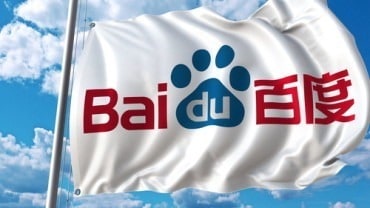
In this week’s real-time analytics news: The Red Hat Summit and the RSA Conference provided a wealth of new product announcements.
Keeping pace with news and developments in the real-time analytics market can be daunting. We want to help by providing a summary of some of the important real-time analytics and AI news items our staff came across this week. Here is our list:
Red Hat used its annual summit to launch a variety of solutions aimed at enabling real-time, cloud-native, and AI applications. Some of the major announcements included:
Red Hat Enterprise Linux AI (RHEL AI) was introduced as a new solution that brings together the open source-licensed Granite large language model (LLM) family from IBM Research, InstructLab model alignment tools based on the LAB (Large-scale Alignment for chatBots) methodology, and a community-driven approach to model development through the InstructLab project.
Red Hat OpenShift Lightspeed and Red Hat Enterprise Linux Lightspeed will now offer natural language processing capabilities designed to make Red Hat’s enterprise-grade Linux and cloud-native application platforms easier to use for users of any skill level. It does this through an integration with generative AI technology.
Podman AI Lab, an extension for Podman Desktop, gives developers the ability to build, test, and run generative artificial intelligence (GenAI)-powered applications in containers using an intuitive, graphical interface on their local workstation.
Partner news from the conference:
Intel and Red Hat will collaborate to power enterprise AI usages on Red Hat OpenShift AI. Together, the two companies will deliver end-to-end artificial intelligence (AI) solutions on Intel AI products (including Intel Gaudi AI accelerators, Intel Xeon processors, Intel Core Ultra and Core processors, and Intel Arc GPUs) for model development and training, model serving, and management across a hybrid cloud infrastructure.
Cloudera announced Cloudera Flow Management – Kubernetes Operator and Cloudera Streaming – Kubernetes Operator, allowing customers to deploy Apache NiFi, Apache Kafka, and Apache Flink clusters on Kubernetes application platforms such as Red Hat OpenShift.
NVIDIA will integrate NVIDIA NIM with Red Hat OpenShift AI to accelerate the delivery of generative AI (gen AI) applications for faster time to value.
Additional coverage of the conference and other announcements:
- Red Hat Summit Keynote: Red Hat Doubles Down on AI
- Red Hat Simplifies GenAI Development and AI Search
- Red Hat Marries Linux and AI into a Platform for AI
News on AI’s increasing role in enhancing security and observability
ArmorCode announced the general availability of AI Correlation in the ArmorCode Application Security Posture Management (ASPM) Platform. ArmorCode AI Correlation is powered by the collective intelligence gained from deep analysis of over six billion processed findings and experiences of the thousands of security professionals from dozens of Fortune 1000 organizations and others that use the platform. AI Correlation is one pillar of an AI-powered ASPM that leverages AI across correlation, prioritization, and remediation to drive risk reduction for every enterprise.
Cisco announced a new virtual appliance for its AppDynamics On-Premises application observability offering, enabling customers to use a self-hosted observability solution built on AI-powered intelligence for anomaly detection and root cause analysis, application security, and SAP monitoring. The latest innovations allow organizations to detect application performance anomalies faster and with greater accuracy, protect against security vulnerabilities and attacks, and maintain the performance of SAP applications and business processes.
Dynatrace announced it is enhancing its platform with new Kubernetes Security Posture Management (KSPM) capabilities for observability-driven security, configuration, and compliance monitoring. The new KSPM offering builds on Dynatrace’s existing security protection capabilities, including Runtime Vulnerability Analytics (RVA) and Runtime Application Protection (RAP), strengthening cloud-native application protection in the Dynatrace platform. These combined capabilities provide DevSecOps, security, platform engineering, and SRE teams, who are all responsible for ensuring the security of Kubernetes environments, with an innovative solution for security posture and compliance.
Elastic announced Search AI will replace the traditional SIEM with an AI-driven security analytics solution for the modern SOC. Powered by the Search AI platform, Elastic Security is replacing largely manual processes for configuration, investigation, and response by combining search and retrieval augmented generation (RAG) to provide hyper-relevant results that matter. The newest feature, Attack Discovery, triages 100s of alerts down to the few attacks that matter with a single button click and returns results in an intuitive interface, allowing security operations teams to quickly understand the most impactful attacks, take immediate follow-up actions, and more.
Mezmo announced new capabilities that help companies understand, optimize, and respond more quickly to their telemetry data. Mezmo’s Telemetry Pipeline can now trigger stateful alerts in stream. It detects data variations and compares data in motion to metrics thresholds to send alerts based on predefined parameters so users can take swift action to remediate issues and prevent costly overages.
New Relic launched the Secure Developer Alliance, which aims to provide research, education, and guidance to implementing observable security. Some of the first members to join the alliance include FOSSA, Gigamon, Lacework, Aviatrix, and Opus. In addition, the Secure Developer Alliance includes access to the New Relic observability platform and its cloud-native security tools—including vulnerability management and IAST, so that members can provide their customers with actionable security insights.
OpenText announced new advancements to protect organizations against the ever-growing complexity of cyber threats. Specifically, OpenText cyDNA offers visibility and early-warning insights into cyber threats that transcend traditional perimeters. By analyzing internet signal traffic directed at organizations and their supply chains, cyDNA delivers actionable insights into threat origins and targets – tracking threat actors across an organization’s assets and identifying adversaries such as criminal organizations or nation-states.
Riverbed introduced an advanced AI-powered observability platform to optimize digital experiences and launched several new solutions and a unified agent built on this open architecture. Expanding on its broad collection of full-fidelity data across the IT landscape, Riverbed’s new observability capabilities now enable organizations to overcome visibility blind spots. The company also released the next generation of Riverbed IQ 2.0, an AIOps service that reduces alert fatigue and enables IT to identify and solve issues faster by using AI-driven correlation and automation of Riverbed and third-party data.
Splunk announced Splunk Asset and Risk Intelligence, a solution designed to help businesses streamline compliance, reduce cyber risk, and eliminate the sources of shadow IT. The solution enables organizations to take a more proactive approach to security and risk mitigation, ultimately helping them become more resilient. This new addition builds upon Splunk’s robust security portfolio, which includes Splunk Enterprise Security, Splunk Attack Analyzer, and Splunk SOAR.
StarTree announced new observability and anomaly detection capabilities in StarTree Cloud, alongside vector search capabilities in Apache Pinot. This marks the occasion of the general availability launch of StarTree ThirdEye, offering advanced anomaly detection, as well as the introduction of a write API facilitating real-time sync for ELT pipelines, and integrations with leading visualization platforms, including Tableau and Grafana.
Sumo Logic announced new AI and security analytics capabilities that allow security and development teams to align around a single source of truth and collect and act on data insights more quickly. These advancements, bolstered by Sumo Logic’s free data ingest licensing, empower customers to use their critical security data to close security gaps and better fuel DevSecOps.
Varonis Systems announced the addition of prompt monitoring to its Microsoft 365 Copilot security offering. This new feature identifies suspicious prompts, such as employees searching for salary information or trade secrets. In addition to detecting blatantly malicious intent, Varonis uses machine learning to build behavioral profiles for each user and will detect when their actions — with Copilot or otherwise — become abnormal.
Vectra AI announced the integration of Vectra AI Attack Signal Intelligence with CrowdStrike Falcon Next Gen SIEM. This expands existing CrowdStrike and Vectra AI integrations to provide security operations center (SOC) leaders, architects, engineers, and analysts a clear path to replace their legacy security information and event management (SIEM) with a modern detection and response platform designed for the hybrid enterprise. Specifically, the new integration helps SOC analysts detect hybrid attacks in real-time and stop them early in their progression.
Other real-time analytics news in brief
Boomi announced the Boomi AI Agent Framework and the Boomi DataHub. The former is a set of integration and no-code development capabilities enabling businesses to run Boomi agents as well as build and run their own. The Boomi DataHub is a data foundation for operational, analytical, and AI data workloads that will expand over time to provide enterprise-scale movement and standardization of data. In addition, Boomi announced the acquisition of APIIDA’s federated API management business and API management assets from Cloud Software Group.
DataForge has open-sourced a new framework for developing and managing data transformation code: DataForge Core. By using functional structures and other modern software engineering concepts, the new offering accelerates data product development. By changing the foundational paradigms of the code, DataForge Core allows for easy expansion and growth of data platforms to keep up with the accelerating demand for data, reporting, and AI within modern enterprises.
IBM and SAP SE announced plans for the next era of their collaboration, which includes new generative AI capabilities and industry-specific cloud solutions that can help clients unlock business value. IBM Consulting and SAP aim to accelerate the transformation enabled by RISE with SAP by supporting clients in next-generation AI business processes and industry innovation, building intelligent industry use cases enabled by data-driven insights, platform architecture, ecosystem expansion, and more. The two also announced the watsonx planned availability on the Generative AI Hub.
O2 Telefónica, using technologies from Nokia and from Amazon Web Services (AWS), launched the 5G Cloud Core, a new 5G core network built entirely in the cloud. Selected customers of O2 Telefónica will benefit from the advantages of the cloud, including a better network experience when surfing on the provider’s 5G standalone network (“5G Plus”), underlying resource availability, service resilience, and faster software updates. The 5G Cloud Core will be designed for a capacity of up to 1 million customers in the first phase.
Oracle announced plans for Oracle Code Assist, an AI code companion, to help developers boost velocity and enhance code consistency. Powered by large language models (LLMs) running on Oracle Cloud Infrastructure (OCI) and optimized for Java, SQL, and application development on OCI, Oracle Code Assist is planned to provide developers with context-specific suggestions that can be tailored to an organization’s best practices and codebases. Oracle Code Assist will also be designed to be used to update, upgrade, and refactor code written in most modern programming languages.
Persistent Systems announced the launch of Persistent iAURA, a suite of AI-powered data solutions engineered to catalyze business growth. iAURA empowers businesses with seamless deployment and precision in addressing data challenges for AI implementations. The solutions harness AI and ML to uncover hidden patterns, enabling data-driven decision-making, enhanced business intelligence, and automated data quality assurance and reconciliation.
Redpanda announced the release of Redpanda 24.1, an update that provides users with more options for optimizing performance, extends inline processing capabilities, and ensures the predictability and security of their systems. With a flexible write caching option, Redpanda 24.1 improves performance on a wider variety of hardware and storage infrastructure. The release also includes new ways to balance cluster resources, role-based access control, and the general availability of Redpanda’s data transformation capabilities.
Yellow.ai launched Orchestrator LLM, an agent model that determines the most suitable next step while engaging in personalized, contextually aware conversations. By retaining context, the generative AI agent model enables faster and more accurate issue resolutions, resulting in increased customer satisfaction. The solution offers enhanced customer experience with advanced context switching and zero training for maximum operational efficiency.
If your company has real-time analytics news, send your announcements to [email protected].
In case you missed it, here are our most recent previous weekly real-time analytics news roundups:
- Real-time Analytics News for the Week Ending May 4
- Real-time Analytics News for the Week Ending April 27
- Real-time Analytics News for the Week Ending April 20
- Real-time Analytics News for the Week Ending April 13
- Real-time Analytics News for the Week Ending April 6
- Real-time Analytics News for the Week Ending March 30
- Real-time Analytics News for the Week Ending March 23
- Real-time Analytics News for the Week Ending March 16




























